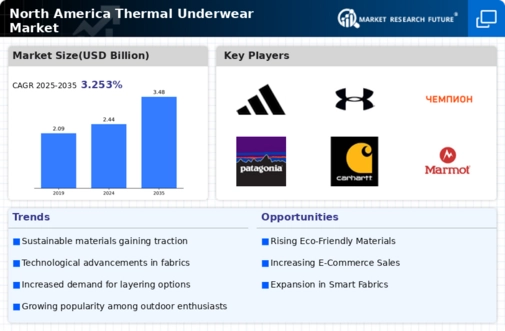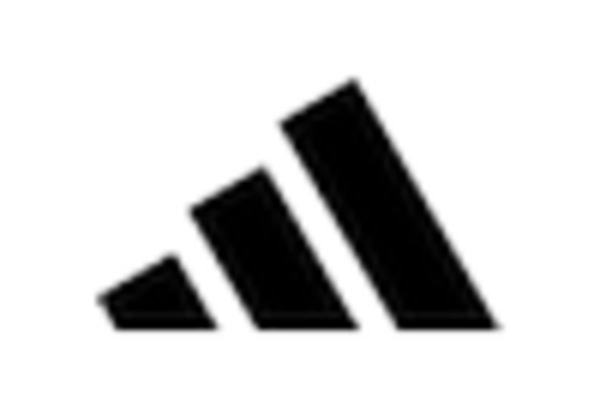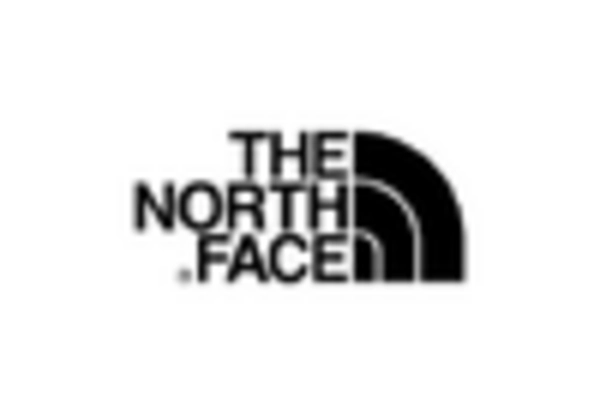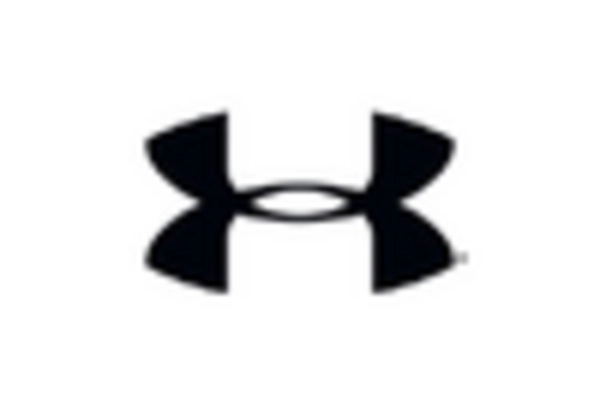Increased Outdoor Activities
The thermal underwear market in North America is experiencing growth due to a rise in outdoor activities among consumers. As more individuals engage in skiing, snowboarding, and hiking, the demand for thermal underwear has surged. This trend is particularly pronounced in regions with colder climates, where thermal garments are essential for comfort and warmth. According to recent data, the outdoor recreation sector in North America has seen an increase of approximately 10% in participation rates, which correlates with a heightened interest in thermal apparel. Consequently, manufacturers are focusing on developing innovative thermal solutions that cater to the needs of outdoor enthusiasts, thereby driving sales in the thermal underwear market.
Seasonal Demand Fluctuations
The thermal underwear market is characterized by seasonal demand fluctuations, particularly during the winter months. As temperatures drop, consumers are more likely to seek out thermal garments to stay warm. This seasonal trend creates opportunities for retailers to capitalize on increased sales during colder periods. Data indicates that sales of thermal underwear typically rise by approximately 30% during the winter season compared to other times of the year. Retailers often implement targeted marketing strategies to attract consumers during this peak demand period, further driving growth in the thermal underwear market. Understanding these seasonal patterns is crucial for stakeholders aiming to optimize inventory and sales strategies.
Fashion Trends and Athleisure
The thermal underwear market is significantly influenced by the growing trend of athleisure wear in North America. Consumers are increasingly seeking versatile clothing that can transition from casual to active settings. This shift has led to a demand for stylish thermal underwear that not only provides warmth but also complements everyday outfits. Market data indicates that the athleisure segment has expanded by around 15% in recent years, prompting brands to innovate and incorporate fashionable designs into their thermal collections. As a result, the thermal underwear market is likely to benefit from this trend, as consumers prioritize both functionality and aesthetics in their clothing choices.
Rising Awareness of Health and Wellness
The thermal underwear market is witnessing a surge in demand driven by an increasing awareness of health and wellness among consumers. As individuals prioritize their well-being, there is a growing recognition of the importance of appropriate clothing for maintaining body temperature during physical activities. This trend is particularly relevant in colder months, where thermal underwear plays a crucial role in preventing hypothermia and promoting comfort. Recent surveys indicate that approximately 60% of consumers are more inclined to invest in thermal apparel that supports their health goals. This heightened focus on wellness is likely to propel the thermal underwear market forward, as brands align their offerings with consumer preferences.
Technological Innovations in Manufacturing
The thermal underwear market is benefiting from advancements in manufacturing technologies that enhance product performance. Innovations such as moisture-wicking fabrics, seamless construction, and enhanced insulation techniques are becoming increasingly prevalent. These technologies not only improve the functionality of thermal underwear but also contribute to consumer satisfaction. Market analysis suggests that the introduction of high-performance materials has led to a 20% increase in sales for brands that adopt these innovations. As manufacturers continue to invest in research and development, the thermal underwear market is expected to evolve, offering consumers superior products that meet their diverse needs.

















Leave a Comment